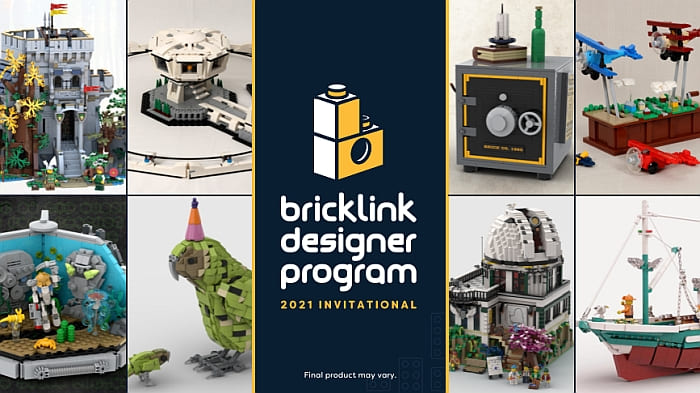Today, the LEGO Group announced that the new #75309 LEGO Star Wars Republic Gunship construction set joins the LEGO Ultimate Collector’s (UCS) line-up. Fans have shared their passion, ideas, and creative takes on the beloved saga with the LEGO Group for more than 20 years, so the LEGO Group invited fans to vote on the top three requested sets via the LEGO Ideas website, and the Republic Gunship rose supreme with over 30,000 votes, accounting for 58% of all votes cast.
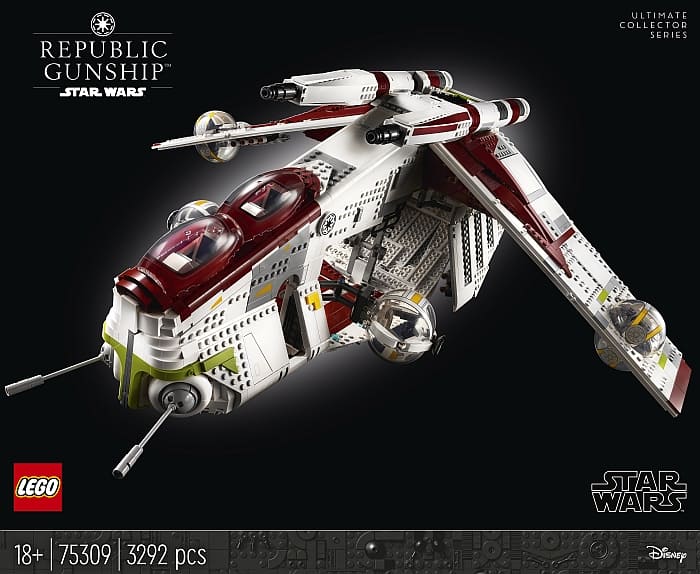
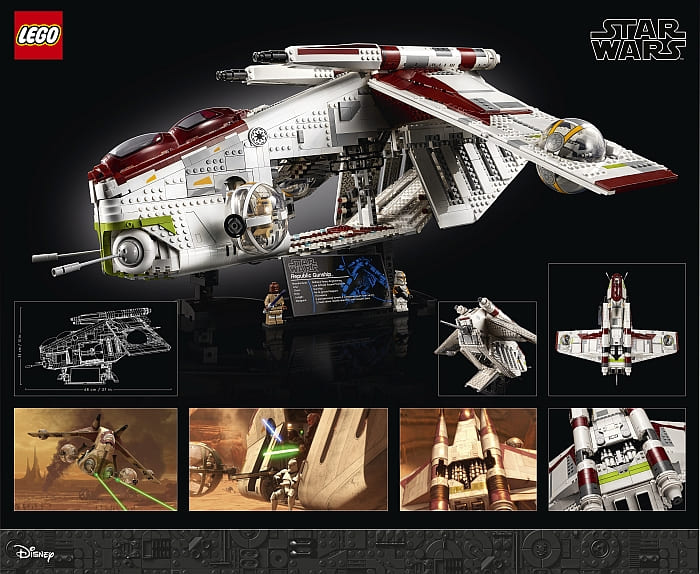
Inspired by Star Wars: Attack of the Clones and featured in the animated series Star Wars: The Clone Wars, the new set is 3,292-pieces of amazing detail crafted for experienced builders and new fans alike. The set also includes LEGO Star Wars minifigures of legendary Jedi Master Mace Windu and a Clone Trooper Commander.
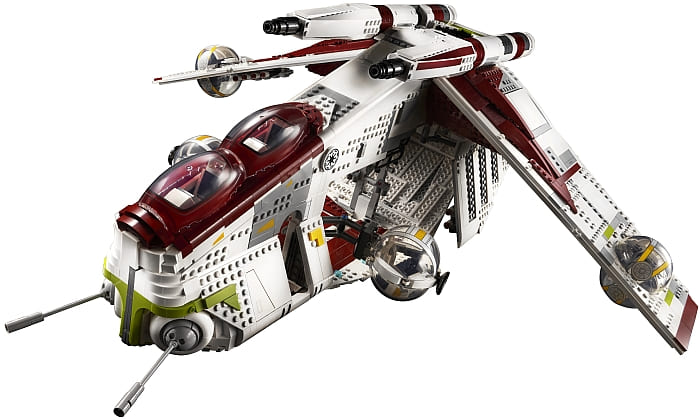
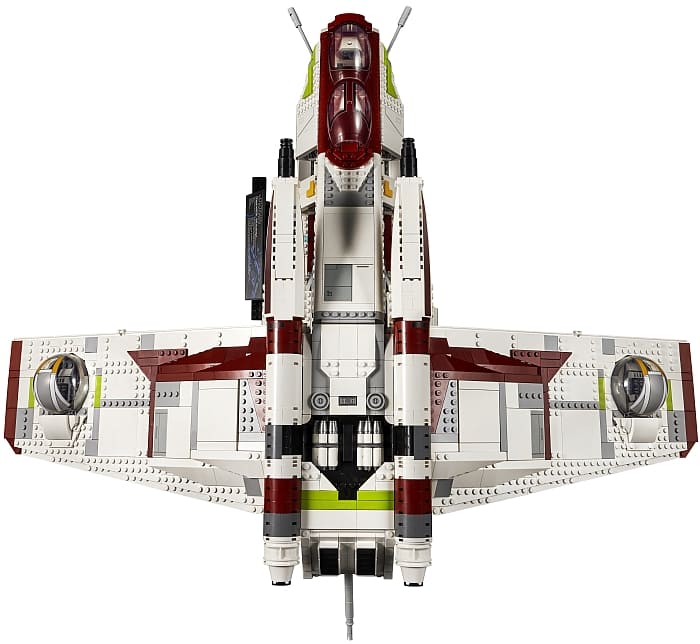

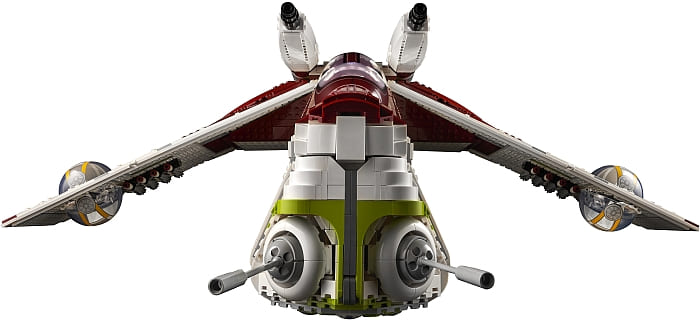
The challenge of creating the Star Wars Republic Gunship in LEGO brick form was given to designer, Hans Schlömer who used his wealth of previous experience including designing the iconic UCS Millennium Falcon and UCS A-wing. The LEGO Group has developed around 150 LEGO Star Wars sets inspired by the prequel trilogy films (Star Wars: The Phantom Menace, Star Wars: Attack of the Clones, and Star Wars: Revenge of the Sith), with this set being the third UCS prequel-themed build – the others being Darth Maul, and Obi-Wan’s Jedi Starfighter.
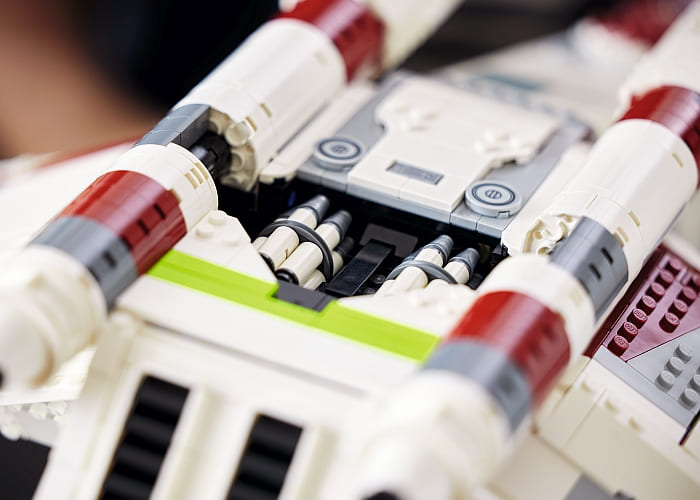
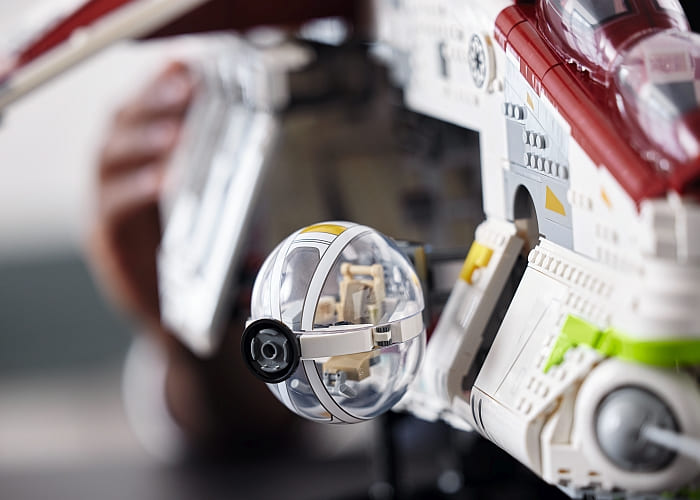

The highly anticipated construction set makes for an impressive display piece thanks to its immense 74cm wingspan that also allows for a feast of notable design features as seen in the film. (The overall size of the set is: 13 inches/33cm 29 inches/74cm wide, and 27 inches/68cm long.) The large free-swinging doors on both sides are some of the largest moving parts ever created in a LEGO Star Wars build and the set is completely open beyond the nose portion. Given the size of the LEGO Star Wars ship, a supportive LEGO Technic frame has been incorporated, perfectly hidden by the exterior panels and allowing Clone Troopers to load for their next mission via lift-arms on the passenger compartment doors.

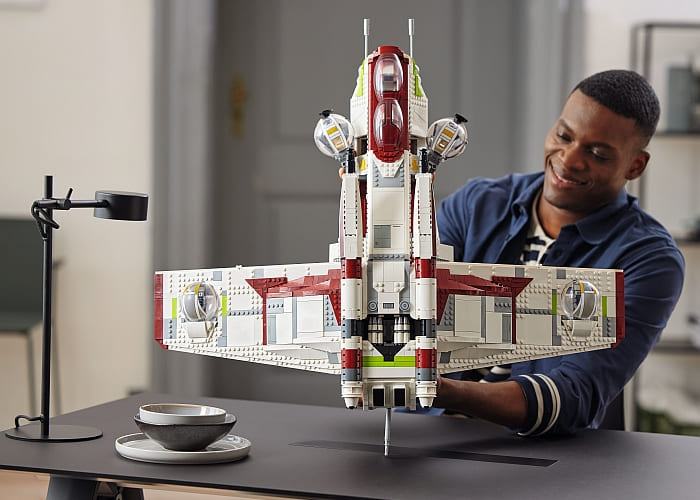

Discussing the new set, Jens Kronvold Frederiksen, Creative Lead of LEGO Star Wars at the LEGO Group said: “Our fans are always coming up with concepts and ideas for the LEGO Star Wars range – so it was great to give them the opportunity to let their voices be heard and choose the next UCS set. There is always an enormous responsibility to deliver a quality design, and the set that Hans has crafted is a triumph, particularly the size. We knew our fans would want to display this model but we didn’t want to compromise on the scale versus the ability to exhibit it. I can’t wait to see how the fans incorporate the set into their Star Wars collections.”
The new #75309 LEGO Star Wars Republic Gunship set will be available starting on August 1, 2021 via official LEGO stores and the Online LEGO Shop and will retail for the recommended price of $349.99 / £329 / €349.99 / 579.99 AUD / 479.99 CAD. For more information and to purchase the set, visit the LEGO Star Wars section of the Online LEGO Shop.

What do you think about this massive set? And how do you like the design and features of the LEGO Star Wars UCS Republic Gunship? Does it meet your expectations? Are you planning to get it? Feel free to share your thoughts and discuss in the comment section below!
And you might also like to check out the following related posts:


